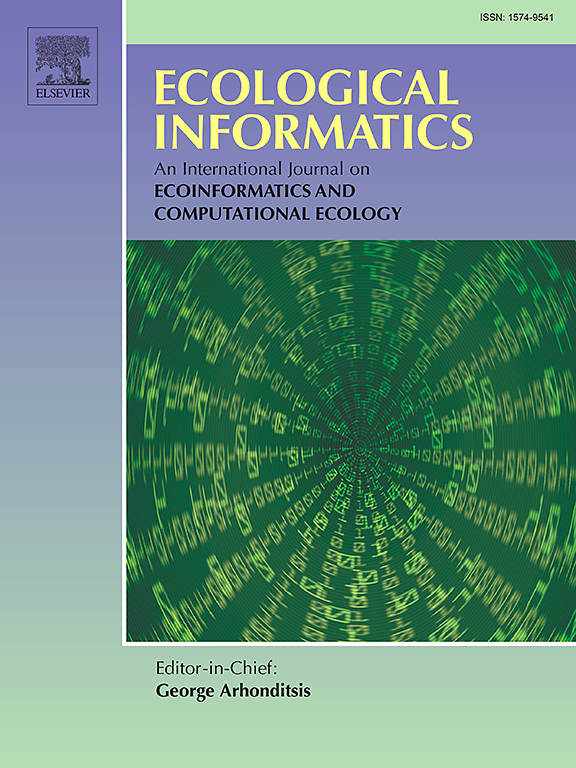Phytoplankton growth and succession driven by topography and hydrodynamics in seasonal ice-covered lakes
IF 5.8
2区 环境科学与生态学
Q1 ECOLOGY
引用次数: 0
Abstract
Understanding how underwater topography affects phytoplankton succession by influencing hydrodynamics is crucial for maintaining the ecological health of lakes. However, there is a lack of in-depth research that accurately depicts underwater topography and coupleing hydrodynamics to establish the reproduction and migration mechanisms of phytoplankton, especially in seasonal ice-covered lakes. A typical seasonally ice-covered lake, Lake Chagan, was selected, and 164 water column and plankton samples were collected in 2023. An integrated underwater topographic-hydrodynamic model was constructed based on topographic data from 597 exploration points and long-term hydrological and meteorological observational data. The dominant algal species and their three-dimensional distribution and succession processes during different periods were studied in detail. The effects of topographic factors (relief, surface curvature, water depth, slope gradient, roughness, and slope aspect) on the hydrodynamic field and phytoplankton distribution were discussed. The results showed that the phytoplankton species diversity was higher in the bottom water column during the non-ice-covered period (March to October). The dominant species of phytoplankton varied with seasons, with diatoms dominating in the ice-covered period and harmful phytoplankton such as cyanobacteria in the non-ice-covered period. The biomass and biomass density of cyanobacteria were also higher than those of other phytoplankton. Phytoplankton species diversity and richness indices in the surface water column had a significant combined effect on the entire lake ecosystem. Surface curvature and slope gradient were the main factors affecting flow velocity during the non-ice-covered period (p ≤ 0.05, r = −0.58 and − 0.62), directly affecting the spatial distribution of cyanobacterial biomass (p ≤ 0.05, r = 0.65; p ≤ 0.01, r = −0.71). Therefore, attention should be paid to the surface curvature and slope of the sediment when controlling cyanobacterial blooms via by sediment dredging. These studies explored the behavior of phytoplankton in response to their fluid environment from a combined biological and physical-dynamic perspective and provided an effective reference for the water environment management of seasonal ice-covered lakes with harmful algal blooms.

求助全文
约1分钟内获得全文
求助全文
来源期刊

Ecological Informatics
环境科学-生态学
CiteScore
8.30
自引率
11.80%
发文量
346
审稿时长
46 days
期刊介绍:
The journal Ecological Informatics is devoted to the publication of high quality, peer-reviewed articles on all aspects of computational ecology, data science and biogeography. The scope of the journal takes into account the data-intensive nature of ecology, the growing capacity of information technology to access, harness and leverage complex data as well as the critical need for informing sustainable management in view of global environmental and climate change.
The nature of the journal is interdisciplinary at the crossover between ecology and informatics. It focuses on novel concepts and techniques for image- and genome-based monitoring and interpretation, sensor- and multimedia-based data acquisition, internet-based data archiving and sharing, data assimilation, modelling and prediction of ecological data.
 求助内容:
求助内容: 应助结果提醒方式:
应助结果提醒方式:


